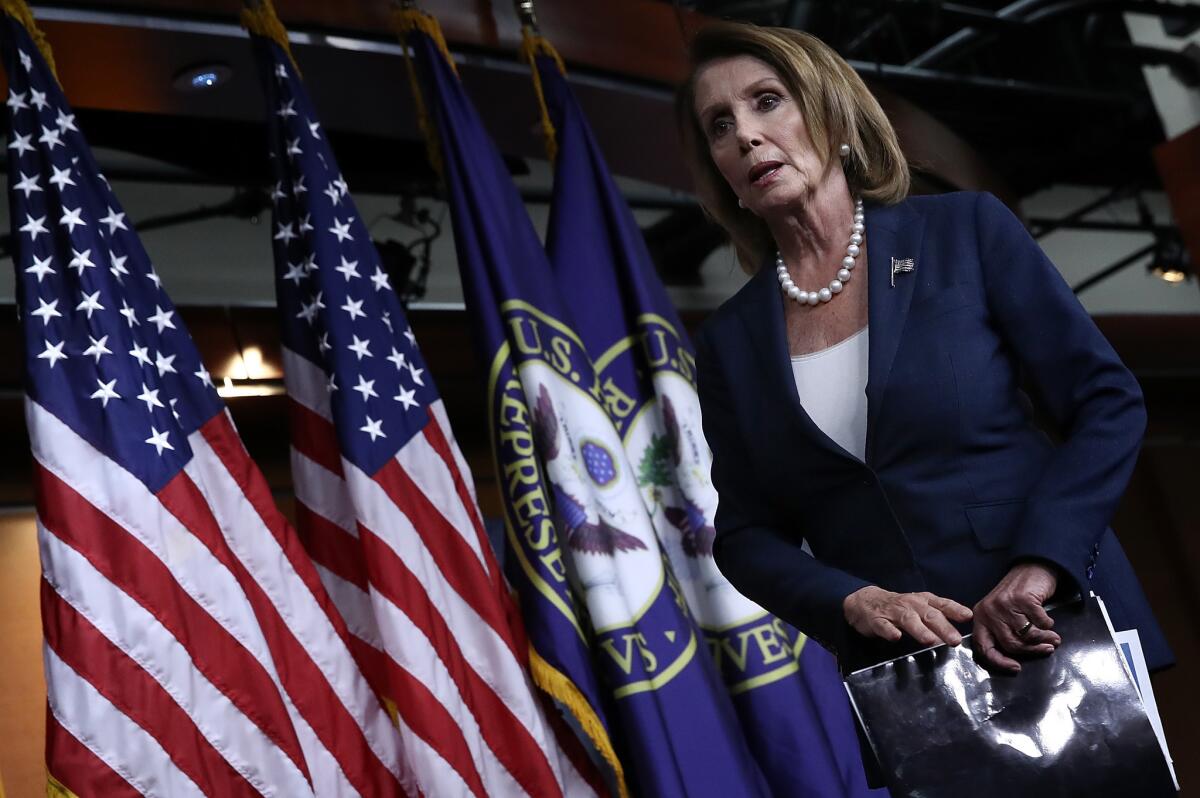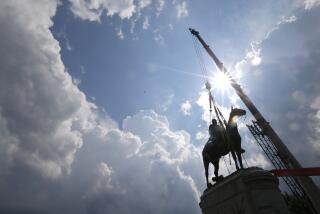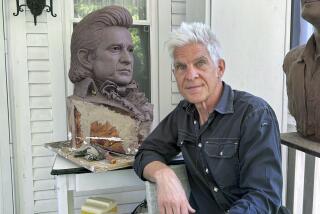Opinion: Why Nancy Pelosi is wrong to remove four portraits from the Capitol

- Share via
The impulse is commendable. House Speaker Nancy Pelosi ordered Thursday that portraits of four of her predecessors be removed from the U.S. Capitol because they were part of the Confederate cause during the Civil War.
At a time when much of the nation is questioning certain monuments and memorials, it’s good that Pelosi is directing her gaze around the Capitol. But the issue of the speakers’ portraits is more nuanced than the controversies surrounding statues and other memorials to Confederate generals and secessionists who took up arms against the United States government.
And Pelosi ought to rethink what she’s doing.
To continue to honor those who sought to destroy the union in defense of slavery sends an abominable signal to African Americans.
The portraits of four speakers are in play: Robert Hunter, a Whig from Virginia; Democrats Howell Cobb of Georgia and James Orr of South Carolina, who were speakers of the House before the Civil War; and Democrat Charles Crisp of Georgia, who rose to that post after the war’s end. All four men served in the Confederacy, although Hunter, Cobb and Orr did so after their tenures as speaker; Crisp was elected to the House well after a general amnesty issued by President Andrew Johnson in 1868.
But here’s the problem: None of those men’s portraits are hanging in the Capitol because of their Confederate roles. The portraits are not intended to celebrate their personal acts of rebellion, but to place them within their historical context as leaders of the United States House of Representatives.
Context is key here. Much like memorials to George Washington and Thomas Jefferson, who were both slaveowners, these portraits hang not because the subjects fought in a war against their own country, but because of their roles in governing that country.
That Washington, Jefferson and other early national leaders were part of, and profited from, slavery is important knowledge for framing how we view them today, and should not be overlooked or downplayed.
But the nation did not erect memorials to them, or place their images on currency, because of their embrace of slavery. They are feted for their contributions to the country. And if, say, it turns out the Jefferson Memorial was built to celebrate Jefferson’s ownership of slaves, I would say remove it.
Five years after President William McKinley was assassinated at the 1901 Pan-American Exposition in Buffalo, N.Y., farmer George Zehnder presented the Northern California city of Arcata with a 8.5-foot-tall statue of the 25th president.
Defenders of the symbols of the Confederacy — such as the statues of Gen. Robert E. Lee and Jefferson Davis, the one and only president of the Confederacy — argue that to remove those memorials from public spaces is to whitewash history.
It is not, as I’ve written before. Those memorials were erected as part of campaigns to rehabilitate the image of the South and to cast the Civil War as a romantic defense of states’ rights and the Southern way of living — which in fact was based on the brutal subjugation and enslavement of people because they were Black.
They do not belong in the public square. Private museums? Sure. Private lots? Fine. But not on public land, where they stand as insults to Black Americans whose own histories may include enslaved ancestors, and who can see in public veneration of the symbols of white supremacy a societal disregard for their equality.
Unfortunately, in this instance Pelosi actually is whitewashing history. She’s removing depictions of people who preceded her in the speaker’s chair for reasons that have nothing to do with why their portraits are there in the first place. The proper corrective would be through informational plaques (if they aren’t already in place) addressing that history.
Something Pelosi should push, though, is getting rid of the system under which Congress allows each state to emplace two statues that they feel reflect themselves. So we have under the roof of the U.S. Capitol statues of Lee, sent by Virginia, and Davis, sent by Mississippi.
California, to its own embarrassment, sent a statue of Father Junipero Serra, who under the Spanish crown established the mission system that enslaved and brutalized Native Americans. Not exactly a good representative of California (former governor and eventual president Ronald Reagan is the other California statue).
We need to look at what we commemorate and why much more closely than we have in the past, and work to remove from public places Confederate memorials that were erected as propaganda.
But we also must make certain we don’t overreach, and we must make certain not to cross the line between correcting representations of history and erasing them.
More to Read
A cure for the common opinion
Get thought-provoking perspectives with our weekly newsletter.
You may occasionally receive promotional content from the Los Angeles Times.












